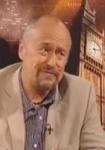For practical, administrative reasons we behave as if the law is fixed and breaches of it can be counted, recounted and reclassified according to rules.
Criminologists have long observed that those rules might be bent. Again no surprise. So I was only mildly surprised to hear from The Guardian last week, that the UK Statistics Authority had downgraded the ‘official’ status of the police recorded crime figures.
That other attempt to cast some light in the Rumsfeldian shadows of crime, the British Crime Survey now Crime Survey for England and Wales (CSEW), had been spared that indignity.
Long before Donald Rumsfeld epistemological ruminations, criminologists have known about the ‘dark figure of crime’. Not Batman, but the known unknown of the gap between the crime figures and the actual amount of crime.
Except, of course, there is no ‘actual amount of crime’. In a Durkheimian sense, crime is infinite in that if you run short of it you can redefine the formerly lawful to be illegal. And, if you are overwhelmed by crime, you can legalise the formerly illegal.
Were Saudi Arabia faced with the mass of women driving it might - not holding my breath - decide it was legal all along. Or, when enough people trespassed on Kinder Scout in 1932 it lead to:
- legislation in 1949 to establish the National Parks;
- contributed to the development of the Pennine Way and,
- eventually secured walkers' rights over open country and common land.
It is a staple of criminology and sociology of deviance modules and texts that crime is socially constructed; that to kill in one circumstance was illegal but obligatory in another - like war or when seeking re-election (Bill Clinton remembers the difficulties Dukakis had over Willie Horton and authorises death of Ricky Ray Rector); or alcohol becoming illegal during prohibition and everywhere under Islam, except in enclaves for ex-pats. Or sex, driving, drinking, voting (?) under-age.
Like large buoyant countries suffering a downgrade by the ratings agencies I presumed that this meant little. The figures were still the figures and, apart from the CSEW, we had no others. That was innocent criminologist me. I should have been channelling my lizard-brained media criminologist. He would have anticipated The Daily Mail’s headline:
How we can't trust the crime figures: After Plebgate, now watchdog says police statistics are unreliable
It quoted Labour spokesman, Jack Dromey, having a pop at the Home Secretary and others expressing concern. This sudden siding with Labour is only short-term and based on the Mail’s ongoing concern that justice is ‘soft’ and crime is rampant.
Coincidentally and serendipitously Marian Fitzgerald was casting doubt on the crime figures from a criminological perspective at a British Society of Criminology seminar that night. Some of her arguments had come to the fore in the debate over the ‘crime drop’ and The Observer picked up on supporting comments by Simon Winlow:
It is ridiculous for criminologists to argue that, because we are seeing statistical falls in crime, the world is becoming a nicer place and that our society is becoming more civilised and humane.
Which reminded me of this quote from Howard Taylor’s ‘Forging the Job: A Crisis of 'Modernization' or 'Redundancy for the Police in England and Wales, 1900 – 39’ where he chides the Home Office of the day for taking the falling crime figures of the day at face value:
Its argument that society had suddenly civilized to the extent that wife-beating, assaults, truancy, drunkenness, immorality, begging, child cruelty, vandalism and other similar ‘minor’ offences had really fallen by two-thirds between the first world war and 1931 was unbelievable.
And, lest we forget, the foundation of the Metropolitan Police in 1829 owed something to Peel’s ‘use’ of the crime figures.
